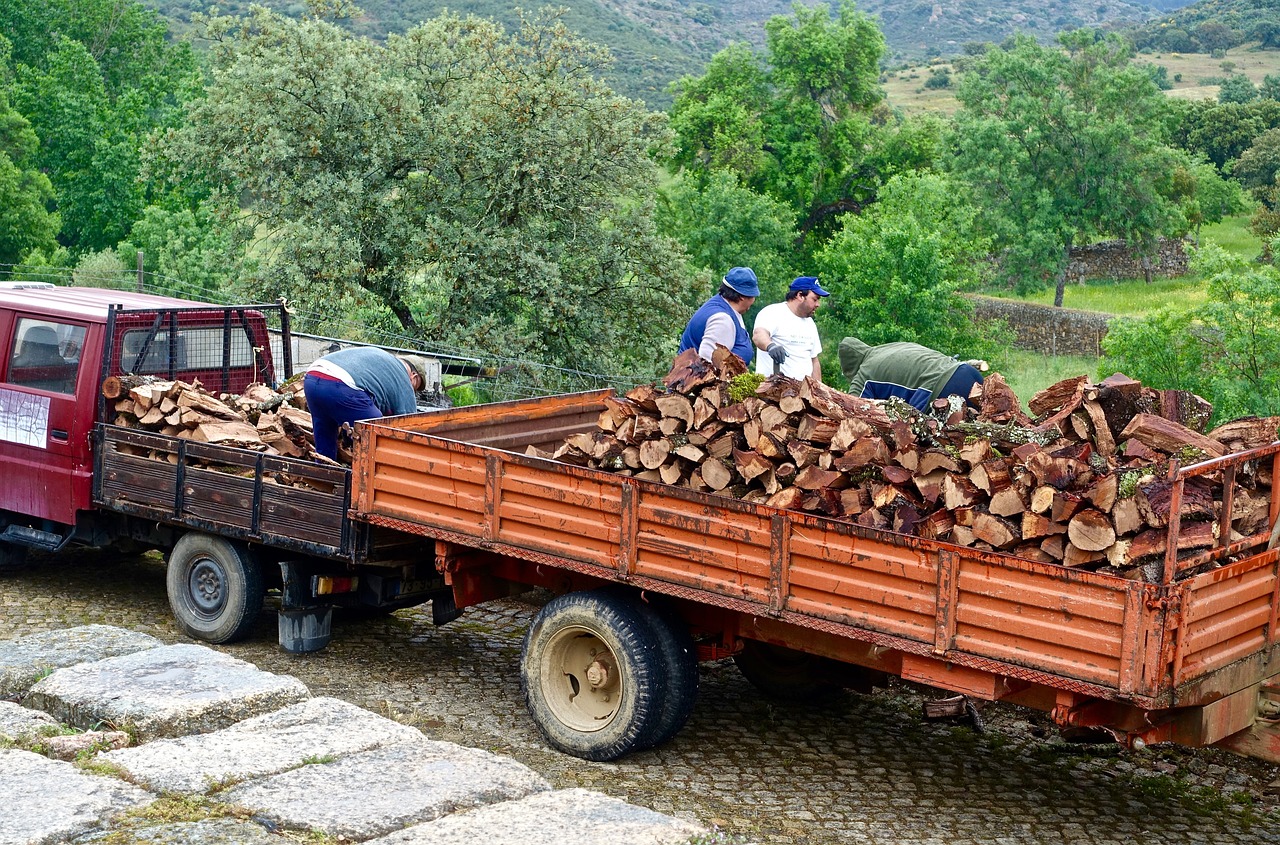The crackling warmth of a campfire, the cozy ambiance of a wood-burning stove, or the soothing sight of a fireplace on a chilly winter evening—all these scenarios evoke a sense of comfort and nostalgia associated with burning firewood. Many outdoor enthusiasts and homeowners enjoy the experience of using firewood for various purposes. However, one common question that often arises is, “Can I transport firewood across state lines?” The answer to this seemingly straightforward question is not as simple as it may seem, as there are various regulations and environmental concerns to consider.
In this comprehensive article, we will delve into the intricacies of transporting firewood across state lines. We will explore the reasons behind regulations, discuss the potential environmental threats associated with moving firewood, and provide practical tips for complying with state-specific rules and ensuring the responsible transportation of firewood.
The Importance of Firewood Regulations
At first glance, it might seem puzzling that there are regulations regarding the transportation of firewood. After all, firewood appears harmless and natural, right? However, there are several crucial reasons behind these regulations that aim to protect the environment, agriculture, and ecosystems from various threats associated with the movement of firewood.
Invasive Species
One of the primary concerns associated with transporting firewood across state lines is the potential spread of invasive species. Invasive species are non-native plants, insects, fungi, or animals that can wreak havoc on ecosystems and native species. Many invasive species can hitch a ride on firewood, including tree-killing insects like the emerald ash borer, Asian longhorned beetle, and gypsy moth.
When firewood is moved from one area to another, these invasive species can be introduced to new environments where they have no natural predators. This can lead to the decimation of native trees, disrupt food chains, and harm biodiversity. The economic impact of invasive species can also be significant, as it can cost millions of dollars to combat their spread and mitigate the damage they cause.
Forest Health
Transporting firewood can also negatively impact the health of forests. Firewood is often harvested from wooded areas, and removing it from these ecosystems can disrupt natural nutrient cycling processes. Overharvesting can lead to soil erosion, decreased biodiversity, and even habitat loss for wildlife.
Furthermore, when firewood is transported over long distances, it may not be properly seasoned or kiln-dried, increasing the risk of introducing pests and diseases to new areas. Invasive pathogens like sudden oak death and beech bark disease can devastate forests, and their spread can be exacerbated by the movement of firewood.
Agriculture and Horticulture Firewood regulations also aim to protect agriculture and horticulture. Invasive pests transported via firewood can infest farms, orchards, and nurseries, causing damage to crops and plants. This can have serious economic consequences for the agricultural industry and lead to increased pesticide use to combat these pests.
Now that we understand why regulations exist, let’s explore how they vary from state to state and what you need to know to stay compliant.
State-by-State Regulations
State regulations regarding the transportation of firewood can vary significantly, so it’s essential to be aware of the rules in both your departure and destination states. While we can’t cover every state’s specific regulations in this article, we’ll provide some general guidelines and examples to give you an idea of what to expect.
Quarantines
Many states have established quarantine zones where the movement of firewood is restricted or prohibited. These quarantine zones are often set up in areas known to be at risk for invasive pests and diseases. For example, states like Michigan and Ohio have quarantine zones to combat the spread of the emerald ash borer, which has devastated ash tree populations.
If you’re traveling within or through a quarantine zone, it’s crucial to be aware of the specific restrictions in place. In some cases, firewood movement may be allowed if it meets certain requirements, such as being heat-treated or certified as pest-free. Always check with the relevant state authorities or the USDA’s Animal and Plant Health Inspection Service (APHIS) for the latest information on quarantine zones and regulations.
Firewood Certification Programs
Some states have implemented firewood certification programs to ensure that firewood sold or transported within the state is safe from pests and diseases. These programs typically require firewood to be sourced and processed following specific guidelines to minimize the risk of contamination.
For example, New York has the “Don’t Move Firewood” campaign, which encourages residents and visitors to use locally sourced firewood to prevent the spread of invasive pests. They also offer guidelines on how to properly season and store firewood to reduce the risk of pest infestations.
Documentation and Permits
In certain states, you may be required to obtain permits or provide documentation when transporting firewood. This documentation may include proof of the source of the firewood, such as a receipt or certificate of origin. Some states may also require permits for commercial firewood transporters.
Campground and Park Regulations
If you plan to camp in a state park or campground, be aware that they often have specific rules regarding firewood use. Many parks and campgrounds prohibit the use of outside firewood to prevent the introduction of invasive species. Instead, they may sell or provide firewood that has been locally sourced and certified as safe.
Tips for Responsible Firewood Transportation
Now that we’ve covered the importance of firewood regulations and the varying rules from state to state, here are some practical tips to help you transport firewood responsibly while staying compliant with regulations:
Buy Local Firewood
Whenever possible, buy firewood locally, preferably from a reputable source. This reduces the risk of introducing pests and diseases from other areas and supports the local economy. Look for firewood that has been certified as pest-free or heat-treated, if available.
Don’t Transport Firewood Across Quarantine Zones
If you’re traveling to or through an area with quarantine regulations, it’s best to leave your firewood behind. Avoid transporting firewood from your home state into or through these zones. Instead, purchase firewood at your destination or use alternatives like propane or charcoal for cooking and heating.
Follow State-Specific Guidelines
Research the specific regulations in both your departure and destination states before traveling with firewood. State agricultural departments or forestry agencies are excellent sources of information. Follow their guidelines and requirements to ensure compliance.
Season Firewood Properly
If you harvest your firewood, ensure it is properly seasoned. Seasoning involves allowing the wood to dry out for an extended period, typically six months to a year, to reduce moisture content. Dry firewood burns more efficiently and is less likely to harbor pests. Well-seasoned firewood is also less attractive to invasive insects.
Store Firewood Safely
If you’re planning to transport firewood, store it in a clean, dry, and covered area to prevent contamination by pests. Avoid stacking firewood directly on the ground, as this can provide easy access for insects. Elevating firewood on pallets or using racks can help keep it off the ground.
Consider Alternatives
In some cases, it may be more convenient and environmentally responsible to use alternative heating and cooking methods that don’t require firewood. Propane, natural gas, electric, or pellet stoves and grills are options to consider when firewood transportation presents challenges.
Conclusion
The question of whether you can transport firewood across state lines is more complex than it initially seems. While firewood is a natural and comforting source of heat and ambiance, it can also pose significant risks to the environment, agriculture, and ecosystems if not transported responsibly. Invasive pests and diseases can hitch a ride on firewood, potentially causing irreparable harm to native species and landscapes.
To ensure the responsible transportation of firewood, it’s essential to be aware of and adhere to state-specific regulations, especially quarantine zones and certification programs. Whenever possible, buy locally sourced firewood or use alternative heating and cooking methods. By following these guidelines and being mindful of the potential environmental impacts, you can enjoy the warmth and beauty of firewood while protecting our natural resources for future generations.










